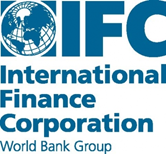
Power India found that finally West Bengal Government has prepared a final draft after 10 months.
At a time when the entire world is focusing on non-conventional or renewable sources of energy, it took the eco-friendly Bengal government 10 months to prepare a final draft. Now after years of neglect, the Mamata Banerjee Government has now finally prepared a draft policy on renewable energy policy. The draft was submitted that was sent to the state power minister Manish Gupta last week.
Power India found that the draft was prepared by an expert committee that included S P Gon Chaudhuri, the former advisor to the state government’s power department. While PricewaterhouseCoopers acted as a consultant, it was funded by the Department for International Development (DFID) and PricewaterhouseCoopers was the consultant for it. An expert committee was formed that included S.P Gon Chaudhuri, the former advisor to the state government’s power department. However, the state government made a delay of more than 10 months to finalize the draft.
Bengal, which could have flourished as a renewable energy hub in the past few years, suffered a setback due to the nonchalance on part of both the Left Front government and the present one. The dilly-dallying tactics by the previous and the present state government have driven out many prospective companies who had evinced interest in setting up solar power plants in the state.
The Bengal government had earlier lost quite a few projects with an investment of over Rs 500 crore as the state did not have any renewable energy policy in place. The list of companies, which could not do project in the state are – a US-based company Astonfield Renewable Resources, Videocon, Reliance Power and a Germany-based company. All these firms had approached the state government back in 2009 but as the government did not have a proper policy in place, it lost quite a few projects worth about Rs 500 crore. The investments would had crossed Rs 500 crore.
Astonfield had planned to taken up a 10-acre plot in Bankura to for set up a 5 MW solar power project on a 10-acre plot in Bankura, while Videocon had planned a 10 MW solar power plant spreading over some 100 acres at Raghunathpur in Purulia which had a capital outlay of about Rs 200 crore at that time.
Though the price of MW renewable energy per unit has come down now, the now. The Videocon project had now could hav e attracted an investment of about Rs 100 crore.
As said by Mr. SP Gon Chaudhuri:
“More than Rs 500 crore of investments were lost only because the state did not have any policy on renewable energy and no separate tariff for developing solar energy. At present, one megawatt of solar power plant costs around Rs 8 crore.”
After the new government came to power, it constituted a separate department for non-conventional energy. But after a few months of operation, the department was merged with the power department.
Also, due to lack of separate tariff for West Bengal and the eastern region of the country, solar power projects are not very competitive in the state.
Bengal has thus been losing out in the competitive bidding with states like Gujarat and Rajasthan., as solar radiation is lower in the state from states like Rajasthan and Gujarat and Bengal have been losing out to these states in competitive bidding.
----------------------------------------
Power India – A popular blog on Indian Power Sector


























